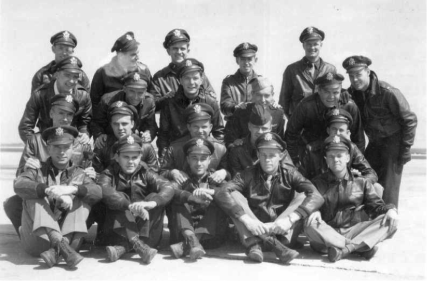Milk Run
It is the 70th anniversary of the invasion of Europe, and the beginning of the end of Adolph Hitler’s domination of Europe. There are still veterans alive who were there, and some of them have returned to the beaches where they landed, and changed the course of history.
The Presidents of the United States and the Russian Federation are there to join Francoise Hollande of France to commemorate the greatest invasion from the sea ever attempted. I have mentioned the contributions of intelligence to the war in the Pacific- and it is worth a note that the incredible advantage of the ULTRA program to decrypt German military communications gave the Allies.
Between that, and successful Operational Deception campaign that featured the very real George Patton in command of a thoroughly bogus command called FUSAG- the “First US Army Group”- in order to keep Hitler’s intelligence off guard and prepared to defend the southern coast of The Atlantic Wall.
Only one of the family was there that day, seventy years ago. Uncle Dick was assigned to the Mighty Eighth Air Force, based in East Anglia. This is what his group of young officers looked like on that day:

Officers of the 837th Squadron, 487th Bomb Group, 8th Air Force at RAF Lavenham, Sussex, England.
From Back to Front, Left to Right:
2nd Lt Charles Eubank (pilot), Captain Richard M. Munson (pilot),
Captain Richard M. Gile (pilot),
1st Lt William A. Yowell (pilot), 1st Lt Theobold G. Remaklus (pilot)
1st Lt Bernard T Nolan (copilot),
2nd Lt Thomas C. Valentine (copilot), 2nd Lt. John L. Sada (navigator),
2nd Lt. Royal K. Snell (copilot),
2nd Lt. Robert J. O’Connell (bombardier), Major Aloysius J Ganey (group navigator)
2nd Lt. Francis.W. Nelson (navigator), 2nd Lt. Harold E. McDougall (navigator),
1st Lt. Clement J. Kochczynski (copilot), 2nd Lt. Bernhard W. Nelson (navigator),
2nd Lt. James G. Brooks (navigator) 2nd Lt. David O. Wilcox (bombardier),
2nd Lt. Francis W. Moan (bombardier), 2nd Lt. Bertram Newmark (bombardier),
1st Lt. Virgil H. Bailey (bombardier), F/O William C. Gee (copilot)
It appears these are the officers from the Eubank, Munson, Gile, Yowell, and Remaklus crews in the rows from left to right (Photo supplied by Brad Nelson, and it also appears in Barney Nolan’s “Isaiah’s Eagles Rising,” 2002, available at Amazon.)
And that is where I am this morning. Word around the base at Lavenham in lovely Sussex on the 5th was that the invasion was a go.
The 837th Squadron, 487th Bomb Group, was tasked with implementing Ike Eisenhower’s “Operation Transportation.” There was conflict in the Air Corps between the Big Thinkers like General Carl “Tooie” Spatz about the strategic use of Air Power. Tooie wanted to concentrate on big ticket items in the German Homeland to disrupt the economy- steel, petroleum and manufacturing.
Ike was more interested in keeping the Germans away from the beaches, and wanted rail and road transportation lines of communication interdicted. Ike got his way.
Mission brief was at 2300 that evening, for a first light launch to take out a bridge on the Loire River. The 837th launched uneventfully. For the most part, anyway. Dick’s B-24H Liberator “Buzzin’ Betsy” lost an engine on take-off. That is a ticklish bit of business, since the bomber was fully laden with fuel and bombs- that is 70,000 pounds of airplane and AVGAS and ordnance hurtling down the crowned runway- but he elected to stay with the formation and proceed to the target on three.
Squadron buddy named Bernie Nolan wrote about it much later. The crossed the Channel and were over the invasion beaches at 0600 at 10,000 feet. That is low for the standard Liberator mission profile, and the crews were amazed at the massive Armada standing to off the coast. A solid under cast extended a mile inland and onward into France, effectively cloaking the bridge.
The squadron was under strict instructions to avoid dropping without a clear visual on the target, though that did not prevent the death of 15,000 French civilians in the Normandy campaign. On that day, Bernie said the squadron never dropped a bomb. Bernie called it a classic milk run.
Of course, his aircraft had four working engines.
Copyright 2014 Vic Socotra
www.vicsocotra.com
Twitter: @jayare303
